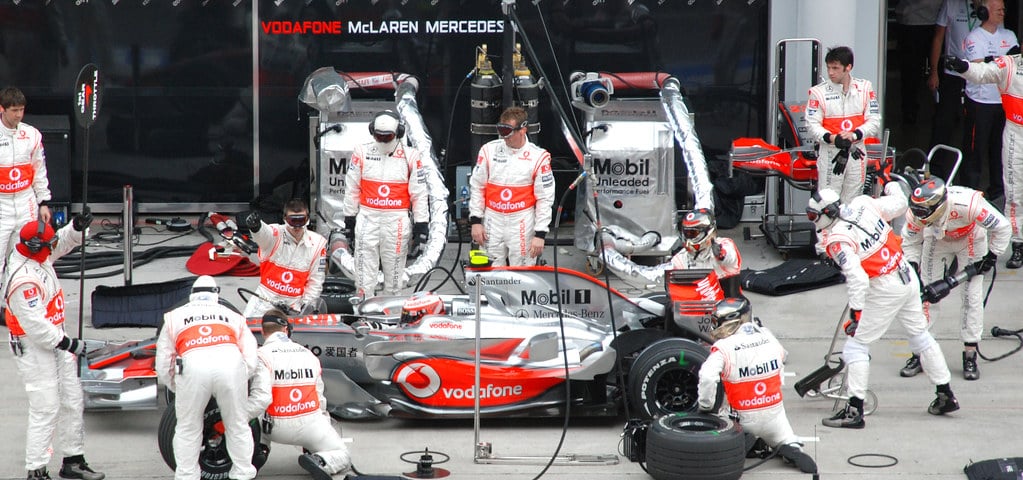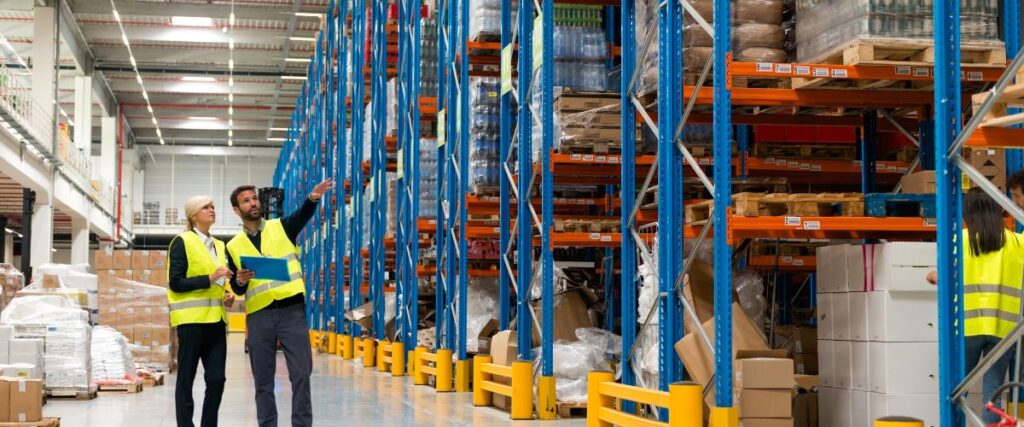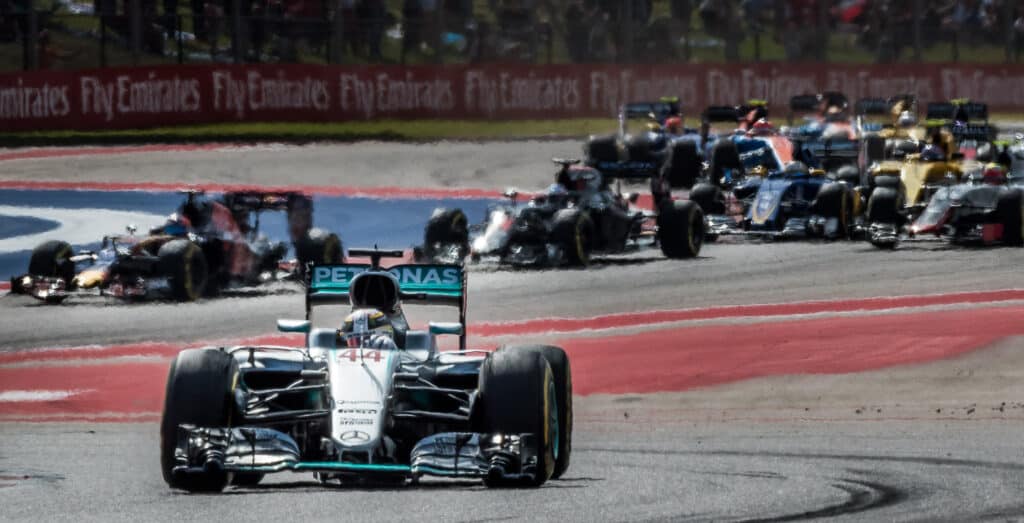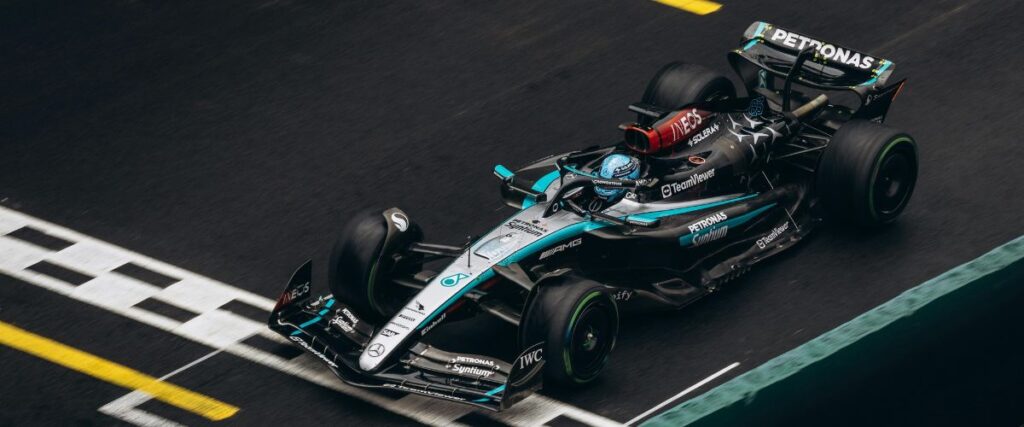The new Formula 1 season is here, and with it, Max Verstappen defends his title with the precision and speed that have made him a global icon. But behind every victory, there’s more than just a great driver: an entire team of engineers, mechanics, and strategists working with precision at every pit stop.
The same principle applies in logistics. A well-structured warehouse storage system serves as the pit stop of the supply chain, where every product undergoes a meticulous process to reach its destination quickly, safely, and without error.
A winning logistics team needs:
- Strategic location to reduce transit times and improve efficiency.
- Coordinated operations that optimize every movement.
- Technology and specialized equipment for maximum precision.
But how does warehouse storage in logistics really work? Let’s break it down.

5 Ways a Warehouse Operates Like an F1 Pit Stop
Formula 1 teams spend countless hours analyzing data and refining their strategies to gain every possible millisecond on the track. In warehouse storage, the goal is the same: ensuring that every load moves with precision and without delays.
Here are five key elements that warehouse storage in logistics and Formula 1 have in common.
1. Error-Free Cargo Handling
The equivalent of a record-breaking tire change
In F1, teams train to change tires in under two seconds. In logistics, moving tons of cargo in minutes without errors is essential to prevent delays.
- Optimized pallets: Every load is secured on a pallet to enable fast and safe handling.
- Adapted machinery: Just like F1, there are large vehicles for heavy loads and smaller ones for precise maneuvering.
When everything is well-organized, a load can be moved in seconds, with no room for error.
2. Safety: Every Detail Matters
The equivalent of F1 safety systems
Just as every F1 car is equipped with high-tech safety measures, warehouse storage relies on multiple layers of protection:
- Adjustable metal bars inside trucks to secure loads.
- Reinforced packaging systems to prevent damage in transit.
- Safety zones within warehouses to reduce the risk of accidents.
In warehouse storage in logistics, just like in F1, precision and safety go hand in hand.

3. Drivers: The Pilots of Logistics
The equivalent of Verstappen communicating with his team
During a pit stop, a driver doesn’t just wait—he communicates, analyzes data, and adjusts his strategy in seconds.
In logistics, truck drivers play a similar role:
- Verifying that cargo is securely fastened
- Ensuring documentation is accurate and ready for delivery
- Adjusting truck height to prevent damage when entering warehouses
Additionally, European regulations strictly enforce mandatory rest periods for drivers, making efficient planning essential to avoid delays.
4. Technology Alone Isn’t Enough: The Human Factor
The equivalent of race engineers making real-time decisions
Even though F1 cars are packed with sensors, engineers remain essential for interpreting data and making decisions in real-time.
The same applies to warehouse storage:
- If a pallet is damaged, someone must identify and replace it.
- If a document is missing, someone must ensure it gets processed before the truck can leave.
- If a client changes their plans, the team must react quickly and adjust the strategy.
Without the human factor, neither F1 nor warehouse storage in logistics would be possible.

5. Specialized Equipment for Every Task
The equivalent of configuring a car for each race track
Every F1 track requires different car adjustments. In logistics, each warehouse storage facility needs the right tools to maximize efficiency.
- Large forklifts handle heavy loads quickly.
- Smaller, more agile forklifts maneuver in tight spaces for improved efficiency.
The key is finding the perfect balance between power and agility.
Logistics Has Its Own Pole Position
In F1, pole position is crucial for winning a race. In warehouse storage, location is just as important for operational efficiency.
- A well-positioned warehouse reduces transit times, optimizes routes, and minimizes costs.
- Strategic storage locations allow for load consolidation and greater distribution flexibility.
- Proximity to ports and key connections enables faster and more reliable deliveries.
Just as a driver doesn’t want to start a race from the last spot on the grid, a company shouldn’t operate from a poorly connected warehouse storage location.

Safety Car: What Happens When Things Go Wrong?
In Formula 1, when an accident happens, the Safety Car enters the track, forcing teams to adjust their strategies instantly.
In logistics, unexpected challenges also arise:
- Port delays affecting delivery schedules.
- Last-minute demand changes requiring route adjustments.
- Documentation issues that can halt a shipment.
The best warehouse storage teams react quickly, ensuring their supply chain stays on track.
Portex Logistics: Your Winning Team for 2025
In Formula 1, the fastest driver doesn’t always win. The teams that succeed are those that:
- Analyze data and plan every move with precision.
- Have the best human and technological resources.
- Adapt in real-time to any unexpected situation.
This is exactly what Portex Logistics does in the world of warehouse storage in logistics.
Located strategically in Rotterdam, we operate like an F1 pit crew, ensuring that every load reaches its destination with efficiency, safety, and Swiss precision.
To stay ahead in warehouse storage, partner with us and optimize your logistics strategy today.

